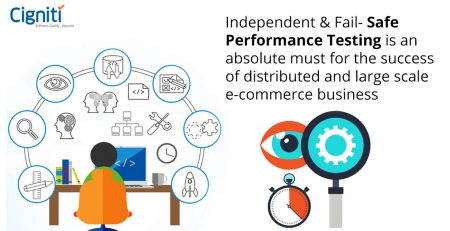Performance Testing in an Agile Environment – Similarity, Differences, and Benefits
|
Listen on the go!
|
An Introduction to Performance Testing and Agile – just to set the tone!
Performance testing refers to testing whether or not the performance of an application is fit enough for it to be produced at a large scale. An application that clears the thorough and rigorous performance testing measures, gets an authentication for being production ready. A successful performance test is indicative of acceptable behaviour of the application when under a specific load/stress. Performance testing covers parameters such as the acceptable use of resources required to perform a task, the acceptable form/quantity of output, and the acceptable timeframe for performing an activity. Another very important parameter to consider is the maximum load the application will be able to bear when multiple concurrent users use the application.
An Agile environment is one that most organizations of the world today are trying to setup and follow as it provides a system that helps to produce high quality deliverables in a much lesser time than the erstwhile Waterfall approach. This environment also improves coordination between the multiple stakeholders, thereby bringing about much more clarity of the business purpose for the product, leading to an improved quality. As mentioned, development process based on Agile removes the challenges of a traditional waterfall model and boosts the ROI (return on investment).
Performance Testing in Agile Environment
While an Agile environment needs flexibility to sustain and cannot survive in an inefficient model, performance testing is required to thoroughly check and weed out if any inefficiency exists in the final product. Obviously, the environment is perfect for the process to grow and thrive.
What is the Similarity?
While an Agile environment focuses on analyzing and finding out the performance-related obstacles hurting the critical processes of a business at the earliest so as to help it thrive, the performance testing process mirrors the activity by capturing and fixing the performance bottlenecks for the specific software or product in question.
What are the Differences?
Following are a few differences between an Agile scenario and performance testing:
- While Agile implementation may mean different things for different teams, a performance tester usually performs the same role as he is wont to do.
- As against a traditional environment, where performance testing specialists are usually engaged at the fag end of SDLC, in an Agile scenario, the same tasks need to be performed for smaller iterations from the initial stage of the SDLC itself.
- In an Agile scenario, once the final objective of the whole SDLC has been defined, the whole process is chunked down into smaller, SMART goals, each of which provide a deliverable for the next iteration. In case performance testing becomes a part of this environment, these iterations may be defined based on performance builds – builds that do not have any performance issues.
What are the Benefits?
Performance testing in an Agile environment offers added benefits in the following areas:
- Quick exposure of bottlenecks: Once performance testing starts being performed in the initial stages of product development, the bottlenecks can be exposed – and thus fixed – much earlier.
- Saving of effort and costs: Once a bottleneck is exposed at an early stage, it may also be resolved earlier. This will reduce the time and resource requirements to fix the issues in a big way. It’s a known fact that a bug resolved during production may save up to 5 times the cost compared to one that is found once a product is released.
- Reduced Bugs at later stages: Small bugs if left unchecked may lead to more complex errors. With the bugs being caught earlier on in the cycle, not only the complexity of the remaining bugs (if any) be easier to manage, the actual number of bugs to be fixed will also be much more manageable.
- Stabilized Application: As an Agile environment requires continuous iterations, it leads to more frequent and rigorous performance testing, the applications become far more stable, and all major risks such as hard coding of values and memory leaks are taken care of, adding the required stability.
- Reusable scripts lead to saving of effort: There may be multiple scripts in the performance testing process that may be reused going ahead. This re-use may lead to effort savings of up to 60%.
- Boosts Confidence: Because the product gets tested on all its parameters and for functionality so many times on an iterative basis, the organizations confidence and faith in its product gets reaffirmed and they can be sure of a scintillating success story.
If you would like to know how Cigniti helped a leading mortgage provider in the United States to improve the application performance by 25% or how Cigniti helped establish a Performance Testing Center of Excellence (PTCoE) for a leading retailer which connects 1100 stores and 150,000 employees, feel free to visit our case studies.






Leave a Reply